Uruguay, a small yet captivating country in South America, is often overlooked but brimming with charm. As a traveler on a mission to explore all the UN-recognized countries, I found Uruguay to be a hidden gem worth sharing. So, today I am sharing how I spent 5 days in Uruguay to give you insight into the country and travel tips too.
When I arrived in Montevideo, to my surprise it was the country’s 300th independent anniversary so there was a weekend full of music concerts happening over 4 different stages, and the main center of town was even blocked for vehicles. So, a lot of people partying up on the streets into the wee hours of the morning. True local experience if you ask me!
That being said, you can still run with the Urguay itinerary I shared below as even with the biggest celebration, the train/bus was punctual and didn’t disrupt my 5 days in Uruguay in any way but of course, it is my experience yours may vary.
Uruguay is nestled between Brazil and Argentina and is rich in history, culture, and natural beauty. Despite its small size, this country has a fascinating past, having been inhabited by indigenous peoples for thousands of years before being discovered by the Spanish in 1516 and colonized in the 16th-17th century.
Btw, your support in sharing my blog and socials is greatly appreciated as I strive to inspire others to explore the beauty and diversity of our planet.
Now let’s get into it:
I am on the mission to travel all the 195 countries in the world (not in a race, more like in a slow and steady fashion) and recently completed 108 countries. It was a big milestone because I work hard, save for these trips and share what I know here on the blog for free so fellow travellers like you can benefit from it. Pls feel free to return the favour by ordering my new book on Amazon – A solo female traveler’s story: from Kathmandu to finding peace in 100+ countries
5 days in Uruguay itinerary


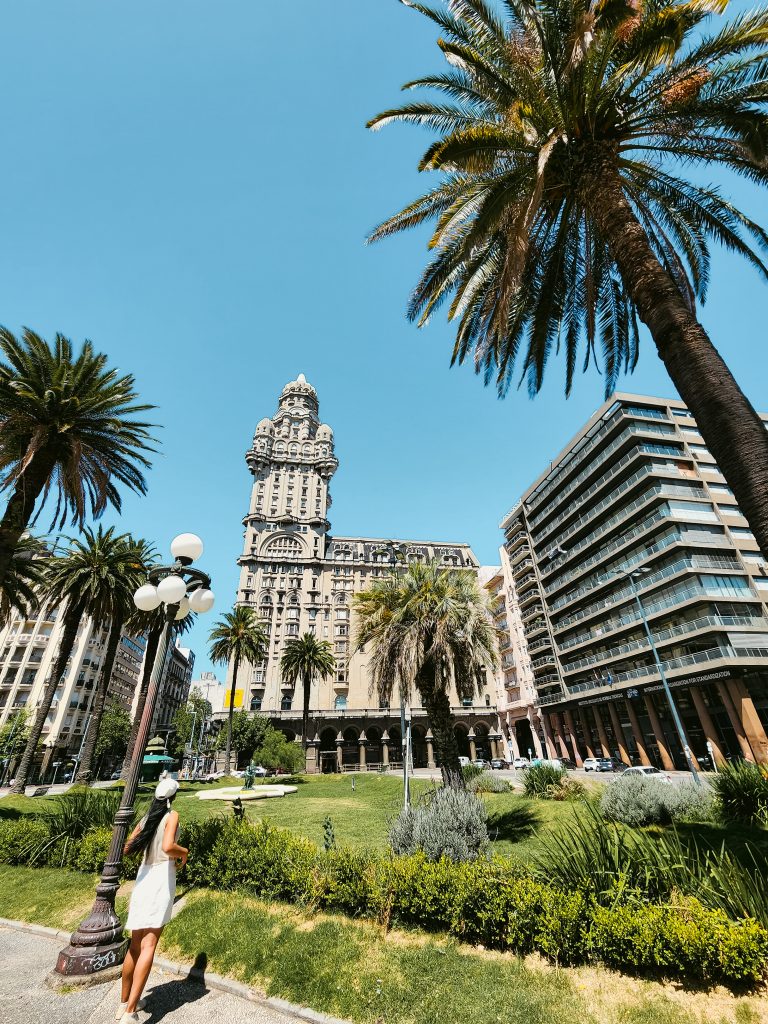
Day 1: Montevideo
Morning: Arrive in Montevideo and check into your accommodation (where to stay below). Settle in and prepare for your exploration of the city.
Afternoon: Head to the Ciudad Vieja (Old Town), where you can wander through the historic streets and admire the colonial architecture. Don’t miss the Mercado del Puerto, a lively market known for its grilled meats and local delicacies. Grab a bite to eat and soak in the vibrant atmosphere.
Evening: Take a leisurely walk along La Rambla to witness beautiful sunsets, the city’s waterfront promenade. Enjoy the fresh breeze and panoramic views of the Rio de la Plata as you unwind from your day of travel. Consider ending your evening with a drink at one of the waterfront restaurants, savoring the ambiance of this charming city. For Dinner, you might want to check out yet another Mercado Ferrando- a 30-minute straight walk from downtown or 5 minute Uber ride. Recommend Mostrador Parrilla.
For accommodation, I recommend using booking.com and sorting with price, then consider the ones with highest reviews plus within 1km of center/old town. Below I have researched and linked the best ones with this filter (at the time of writing)
For tours, I recommend using get your guide and walking tours available in most places
Day 2: Montevideo
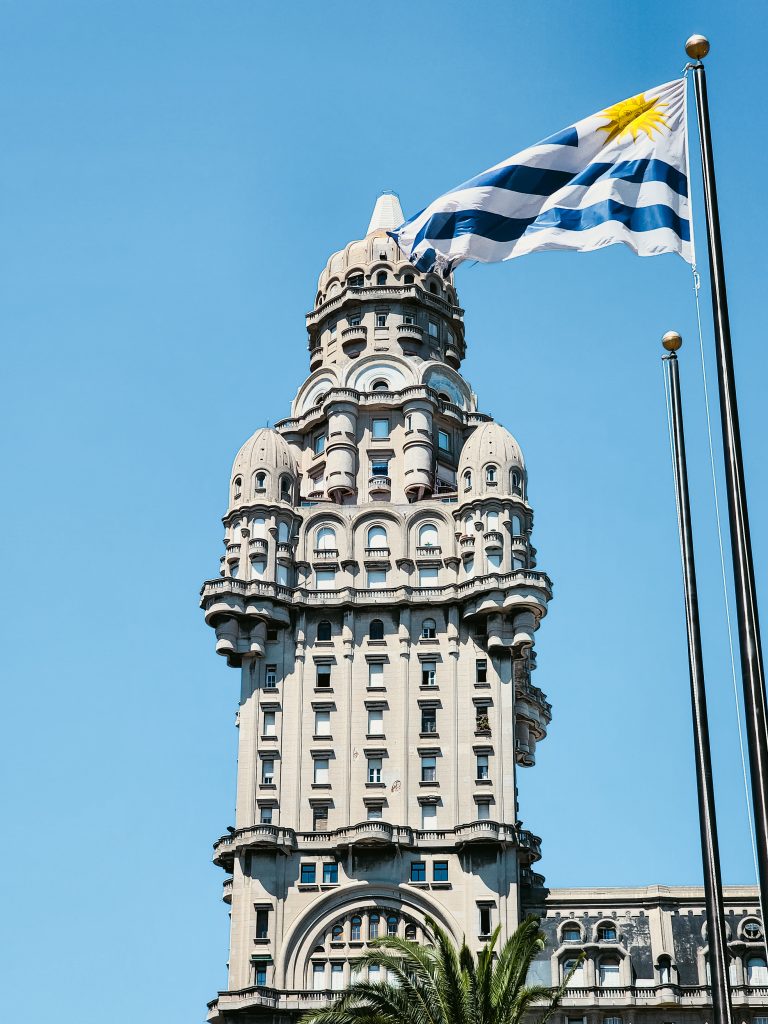


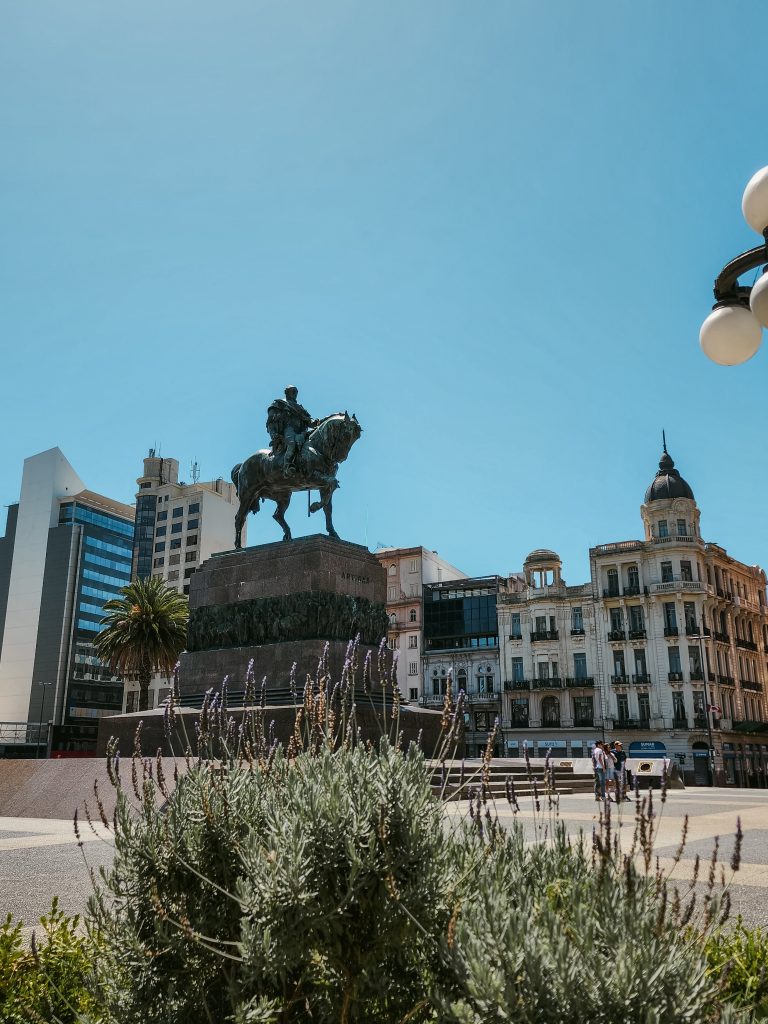
Morning: Start your day by visiting the Legislative Palace, a stunning architectural masterpiece and the seat of Uruguay’s government. Join a guided tour to learn about the country’s political history and admire the grandeur of the building’s interior, including its impressive marble staircase and ornate chambers.
Head to the nearby Artigas Mausoleum, the final resting place of José Artigas, Uruguay’s national hero. The mausoleum is located in Independence Square and is a symbol of Uruguay’s struggle for independence. Explore the museum inside the mausoleum to gain insight into Artigas’s life and legacy.
Enjoy lunch at Cafe La Farmacia (pharmacy turned into a cafe or if you feel like exploring, make your way to the Prado neighborhood, known for its beautiful parks and gardens. Visit the Botanical Garden, home to a diverse collection of plants from Uruguay and around the world. Stroll through the garden’s paths, taking in the sights and scents of the flora.
Continue your exploration of the Prado neighborhood with a visit to the Rose Garden, a peaceful oasis filled with over 3000 rose bushes. Marvel at the vibrant colors and fragrances of the roses as you wander through the garden.
Evening: Back in town, sunsets at the Mirador panorámico de la Intendencia de Montevideo. It offers a fantastic free panoramic view of the city. You can appreciate the different buildings visible from this vantage point also. However, the downside is that the glass isn’t always very clean. Nevertheless, it’s great that the city has this attraction! The cafe at the lighthouse provides free WiFi and is more affordable than most places. Keep in mind that there can be a bottleneck with the elevators, as only six people are allowed in at a time.
Dinner: Wrap up your day with a traditional Uruguayan dinner at a local restaurant. Sample local specialties such as chivito (a sandwich made with steak, ham, cheese, and other ingredients), asado (Uruguayan barbecue), and empanadas (savory pastries filled with meat or cheese). Pair your meal with a glass of Tannat, Uruguay’s signature red wine, for a truly authentic dining experience.
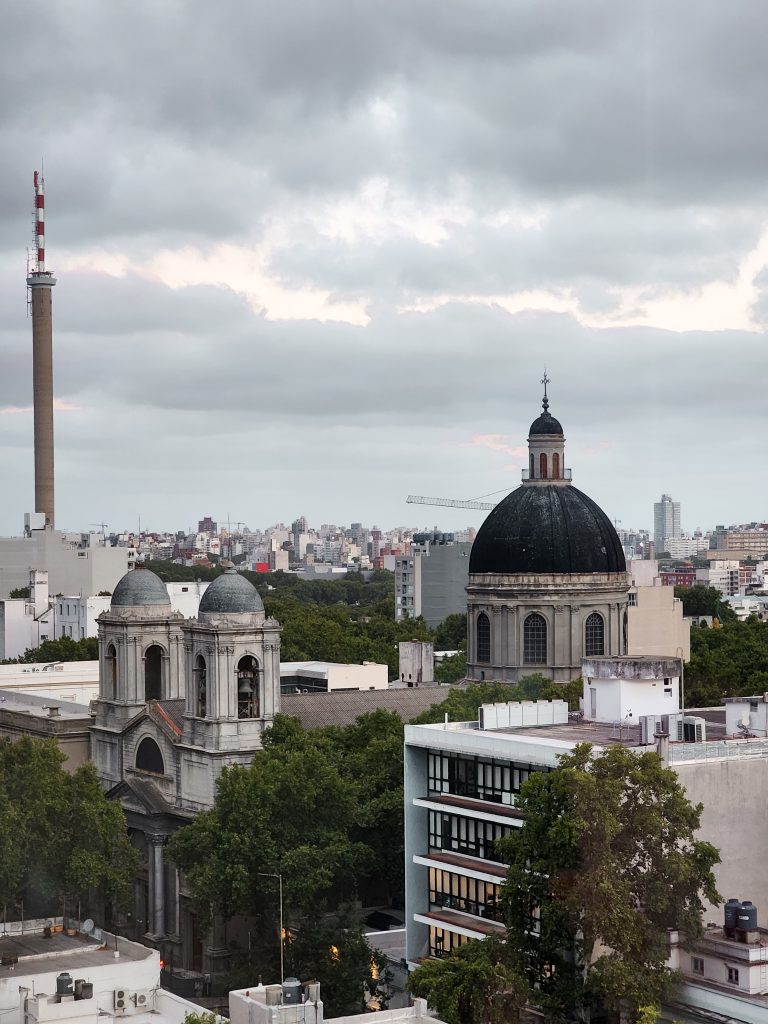
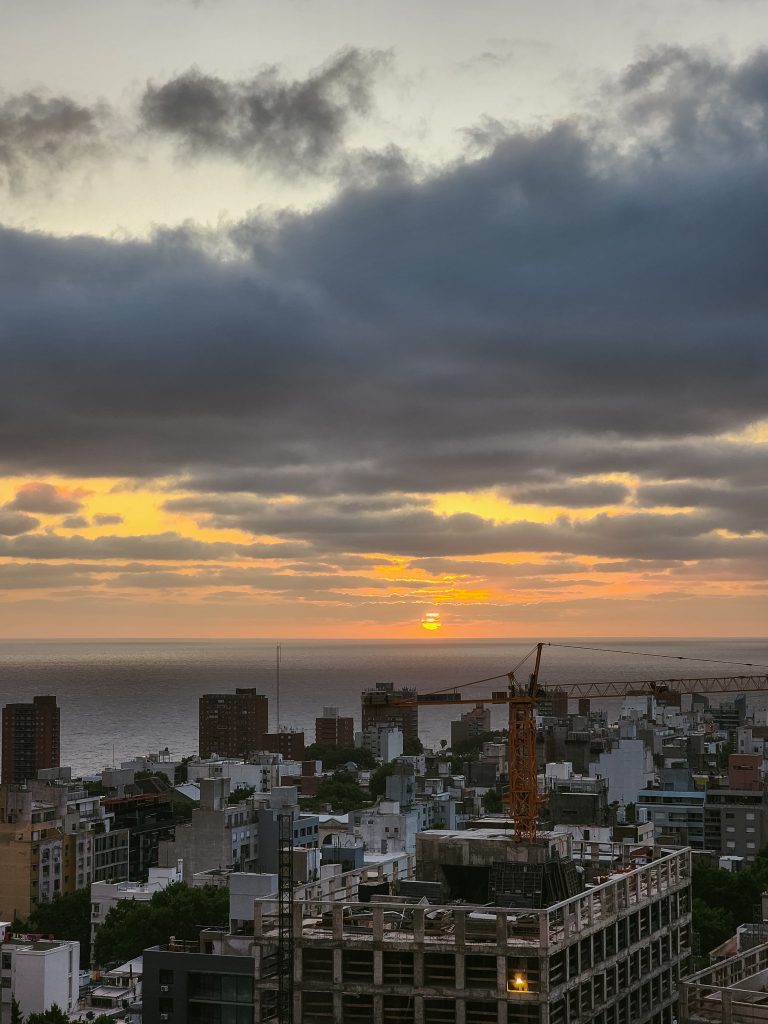
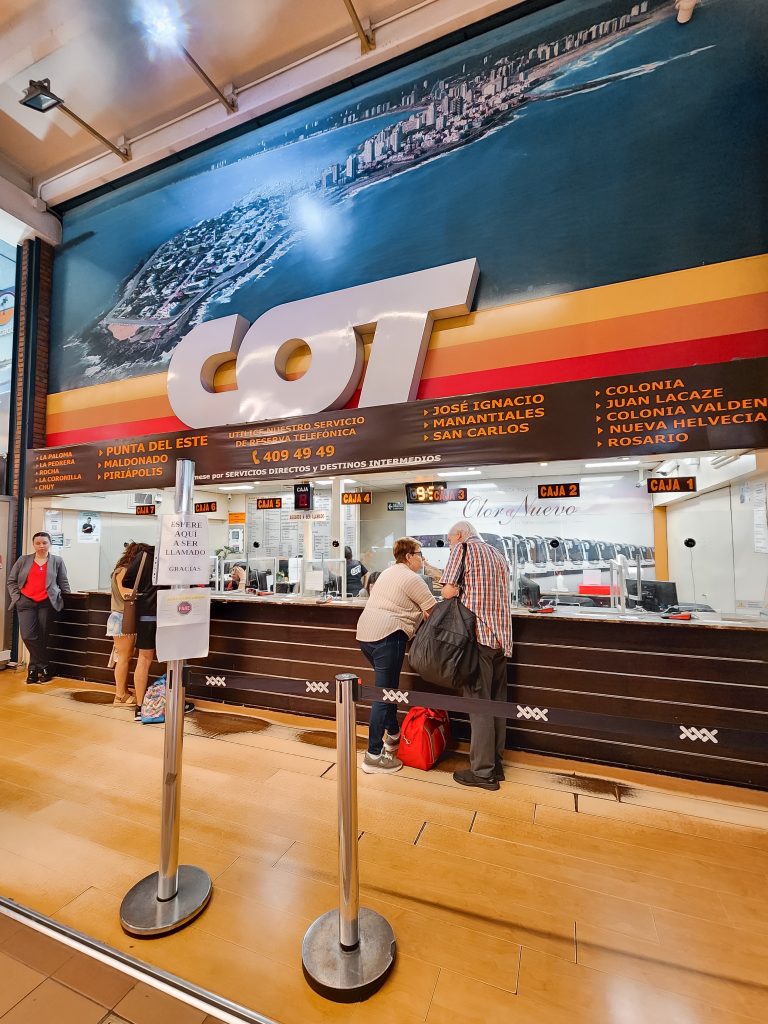
Day 3: Colonia del Sacramento
Morning: Start your day by traveling to Colonia del Sacramento, a picturesque city located on the shores of the Rio de la Plata. Colonia is known for its well-preserved colonial architecture and is a designated UNESCO World Heritage site. The journey from Montevideo to Colonia takes about 2-3 hours by bus or car, offering scenic views of the Uruguayan countryside along the way.
Day: Upon arrival in Colonia, begin your exploration of the city’s charming cobbled streets and colonial architecture. Wander through the historic quarter, known as the Barrio Histórico, where you’ll find colorful colonial buildings, quaint cafes, and artisan shops. Be sure to visit the lighthouse, or Faro de Colonia, which offers panoramic views of the city and the river.
Evening: As the sun begins to set, head to the waterfront to relax and enjoy the stunning views. Colonia’s waterfront promenade, the Rambla, is the perfect spot to unwind and watch the sunset over the Rio de la Plata. Consider having dinner at one of the many restaurants along the waterfront, where you can savor delicious Uruguayan cuisine while taking in the scenic surroundings.
How to get to Colonia from Montevideo?
In Montevideo, you can purchase bus tickets to Colonia del Sacramento from several locations, including:
Tres Cruces Terminal: This is the main bus terminal in Montevideo, located at the intersection of Avenida Italia and Bulevar Artigas. You’ll find numerous bus companies operating from here, offering services to various destinations across Uruguay, including Colonia del Sacramento.
Bus Company Offices: Many bus companies have their own ticket offices scattered throughout Montevideo. You can visit these offices to purchase tickets directly from the company operating the route to Colonia del Sacramento.
Online Booking Platforms: Several online platforms allow you to book bus tickets in advance. Websites such as Andesmar, COT, and Copsa offer online booking services for bus tickets to Colonia del Sacramento. Simply visit their websites, select your desired departure date and time, and purchase your tickets online.
Travel Agencies: You can also buy bus tickets to Colonia del Sacramento from various travel agencies located in Montevideo. These agencies often provide additional services such as itinerary planning and assistance with transportation arrangements.
When purchasing your bus ticket, make sure to check the departure times, duration of the journey, and amenities provided by the bus company to ensure a comfortable travel experience.
Day 4: Punta del Este

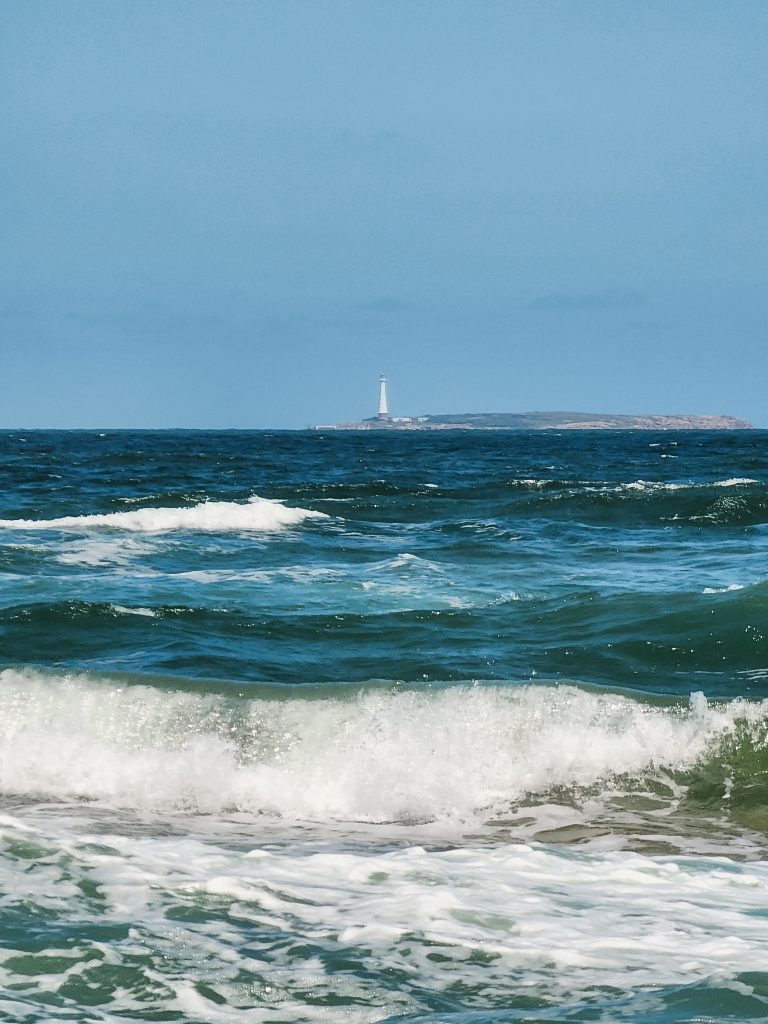
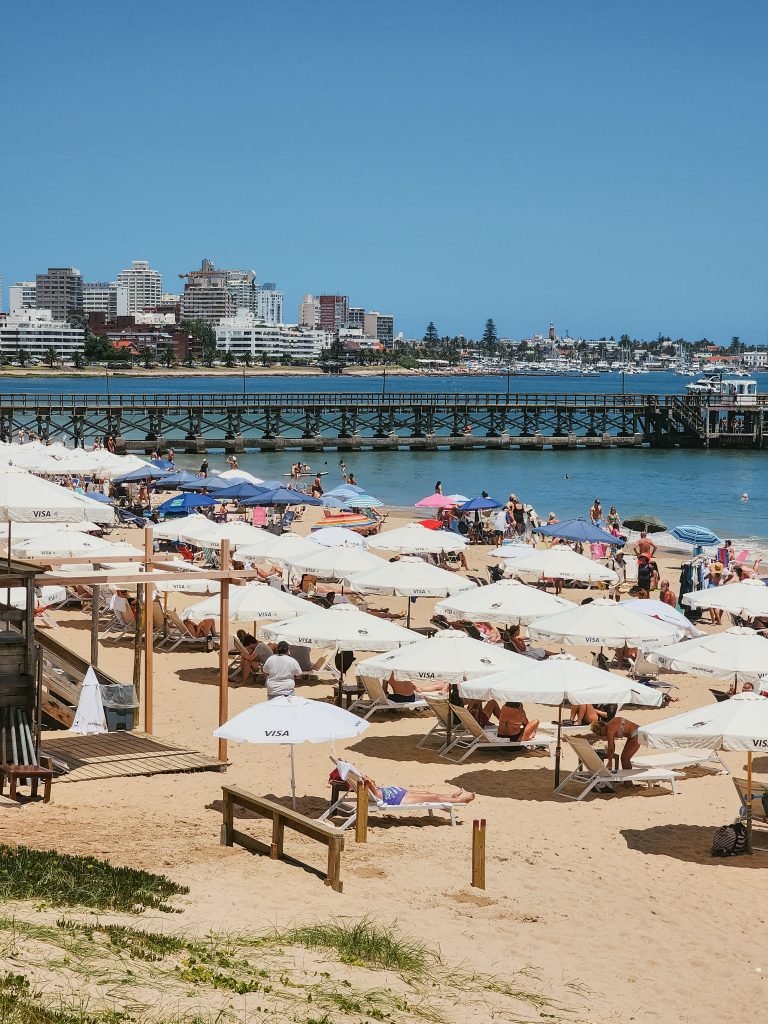
Morning: Begin your day by traveling to Punta del Este, Uruguay’s renowned beach resort town. Located about two hours east of Montevideo, Punta del Este is known for its glamorous beaches, upscale resorts, and vibrant nightlife. Whether you’re looking to relax on the sandy shores or dive into the town’s cultural scene, Punta del Este has something for everyone.
Afternoon: Upon arrival, spend your afternoon soaking up the sun on one of Punta del Este’s beautiful beaches. Playa Brava and Playa Mansa are two popular options, each offering stunning views and crystal-clear waters. If you’re in the mood for some shopping or art exploration, head to Gorlero Avenue, where you’ll find a variety of shops, galleries, and cafes.
Evening: As the day winds down, treat yourself to a delicious dinner at one of Punta del Este’s many restaurants. The town is known for its excellent seafood dishes, so be sure to try the local specialties. After dinner, take a leisurely stroll along the waterfront promenade, La Rambla, and enjoy the stunning views of the Atlantic Ocean before heading back to your accommodation.
Where to buy bus ticket from montevideo to punta del este
Same as above. I went to COT in person and only had to wait 20 minutes for the next bus.
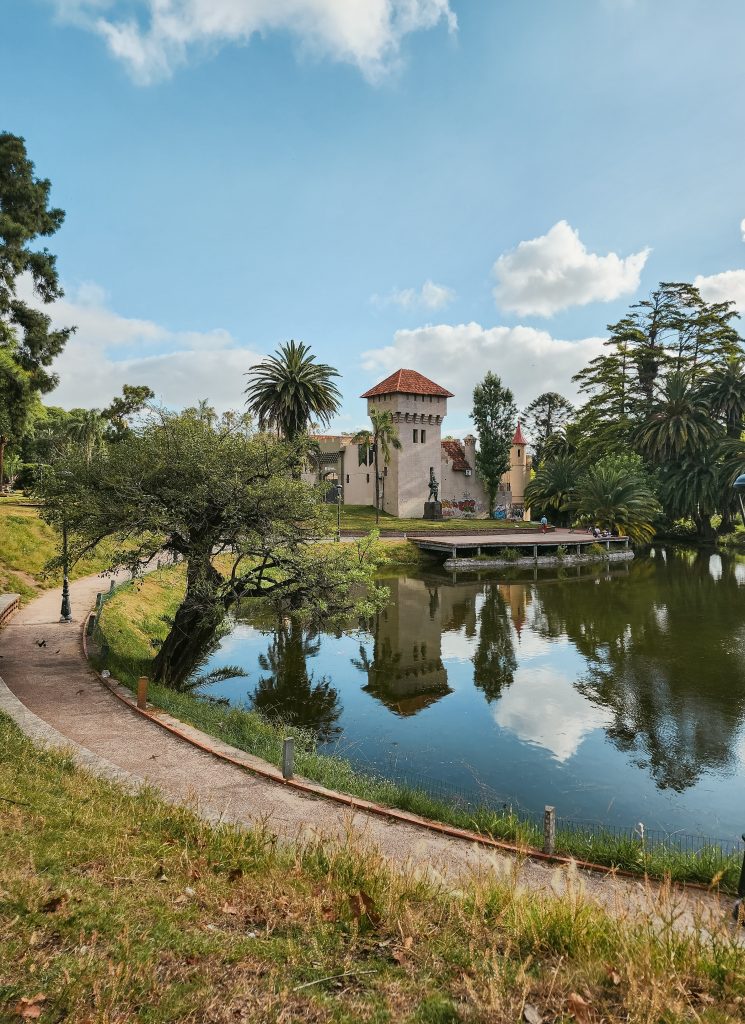
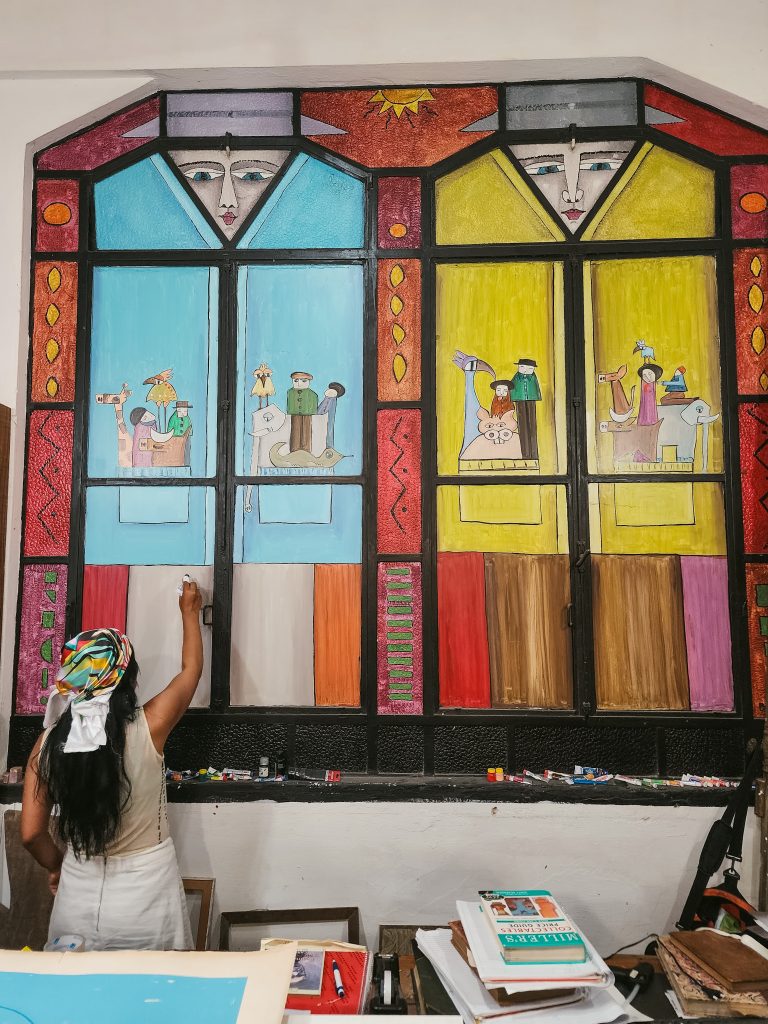
Day 5: Punta del Este
Morning: Start your day by visiting the iconic La Mano sculpture on Brava Beach, hopefully not many people for your photos in the am. Created by Chilean artist Mario Irarrázabal, this sculpture of a hand emerging from the sand has become a symbol of Punta del Este. Take some time to admire the sculpture and enjoy the beautiful views of the beach and the Atlantic Ocean.
Afternoon: After visiting La Mano, head to Casapueblo, a unique building and art gallery created by artist Carlos Páez Vilaró. Located in the nearby town of Punta Ballena, Casapueblo is a sprawling white-washed structure that resembles a Mediterranean villa. Explore the art gallery, which showcases Vilaró’s paintings, sculptures, and ceramics, and learn about the artist’s life and work.
Evening: In the evening, you can choose to either return to Montevideo for your departure or extend your stay in Uruguay. If you have time, consider exploring some beach towns further up the coast like Cabo Polonio or Punta del Diablo. You can even go on a mini road trip as both are slightly remote and picturesque coastal villages in Uruguay, known for their pristine beaches, shifting dunes, and rustic charm.
To extend your stay in both places or turn this 5 days in Uruguay itinerary into one week, you can book accommodation in one of the village’s unique and eco-friendly lodges or hostels, allowing you to immerse yourself in the peaceful and unspoiled natural surroundings for a few more days.
This itinerary offers a mix of cultural experiences, natural beauty, and relaxation, giving you a taste of Uruguay’s diverse attractions. Whether you’re interested in art, history, or simply soaking up the sun on the beach, Uruguay has something for everyone.
If diy not your style, recommend the tours below from a trusted get your guide.
My route in Uruguay
There are 2 most common ways:
1. Ferry across from Buenos Aires to Colonia del Sacramento, a UNESCO World Heritage site, offers a glimpse into Uruguay’s colonial past with its cobbled streets and well-preserved architecture.
2. Fly into Montevideo. My initial plan was to take the ferry, even bought the tickets but I had to change that plan in the end because of Brazil! They were set on Australians needing a visa after Jan 10th so that meant I had to hurry up and get to Brazil before then as I didn’t want to apply for a visa etc But as you would know they pulled back on that decision last minute to April. Anyway, long story short, I flew to Montevideo.
Its capital, Montevideo, is a vibrant mix of old-world charm and modernity, with its historic Ciudad Vieja and bustling markets.
After that, I spent some time in Punta Del Este, known for its glamorous beaches and vibrant nightlife. But Uruguay isn’t just about cities and beaches; it also boasts stunning natural landscapes, such as the picturesque countryside and the rugged beauty of Cabo Polonio.
How to get to Uruguay?
Getting to Uruguay is relatively easy, as the country is well-connected by air, land, and sea. Here are some common ways to reach Uruguay:
By Air:
- Carrasco International Airport (MVD) in Montevideo is the main international gateway to Uruguay. It receives flights from major cities in South America, North America, Europe, and other parts of the world.
- Laguna del Sauce International Airport (PDP) near Punta del Este also handles international flights, especially during the peak tourist season.
By Land:
- From Argentina: Buses run regularly from Buenos Aires to Montevideo and other cities in Uruguay. There are also ferry services between Buenos Aires and Colonia del Sacramento.
- From Brazil: Buses operate from cities like Porto Alegre and São Paulo to Uruguay. You can also take a ferry from Porto Alegre to Montevideo.
- From other neighboring countries: Uruguay is connected by bus services to Paraguay and Chile.
By Sea:
- Ferries operate between Buenos Aires and Colonia del Sacramento, as well as between Buenos Aires and Montevideo. These are popular options for travelers looking for a scenic journey.
Once in Uruguay, domestic flights, buses, and rental cars are available for travel within the country.
Where to stay in Uruguay?
In Uruguay, you can find a variety of accommodation options to suit different preferences and budgets. Here are some popular choices:
Montevideo: Uruguay’s capital city offers a range of accommodation options, from luxury hotels to budget-friendly hostels. The Ciudad Vieja (Old Town) and Pocitos neighborhoods are popular areas to stay, offering easy access to attractions, restaurants, and the waterfront. I stayed at Alma Historica Hotel which was right in town so easy to walk around.
Colonia del Sacramento: In this charming colonial town, you’ll find a variety of boutique hotels, guesthouses, and hostels. The Barrio Histórico (Historic Quarter) is a popular area to stay, with its cobblestone streets and colonial architecture. Here are some suggestions for accommodations in Colonia del Sacramento.
Punta del Este: This glamorous beach resort town is known for its upscale hotels, luxury resorts, and beachfront apartments. The Playa Brava and Playa Mansa areas are popular among tourists, offering stunning views and easy access to the beach. Here are some suggestions for accommodations in Punta Del Este.
Cabo Polonio: For a unique and off-the-grid experience, consider staying in Cabo Polonio. This remote village has limited accommodation options, including rustic lodges and hostels, offering a chance to disconnect and enjoy the natural beauty of the area. Here are some suggestions for accommodations in Cabo Polonio.
Punta del Diablo: Here are some suggestions for accommodations in Punta del Diablo
Piriápolis: This coastal town offers a mix of accommodation options, from beachfront hotels to vacation rentals. Piriápolis is known for its beautiful beaches, hiking trails, and historic attractions. Here are some suggestions for accommodations in Piriápolis.
Uruguay’s Interior: If you’re looking to explore Uruguay’s countryside and vineyards, consider staying at an estancia (ranch) or boutique hotel in the interior. These accommodations offer a peaceful retreat and the opportunity to experience Uruguay’s rural life.
Must try food in Uruguay
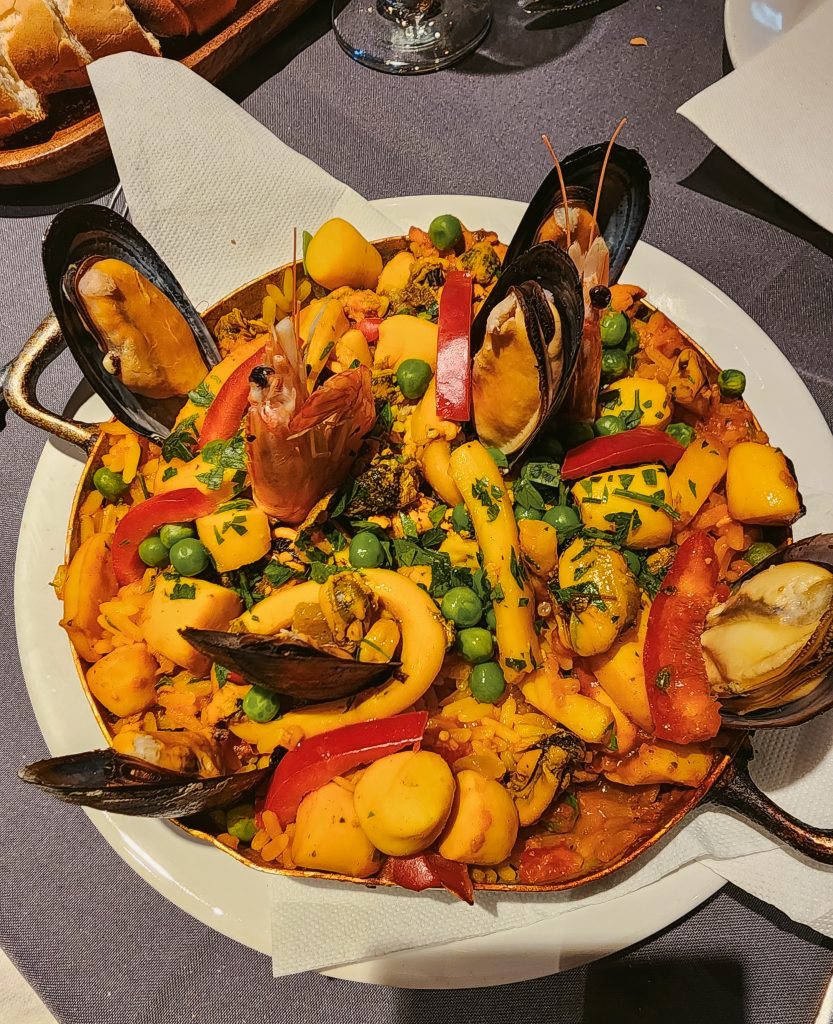
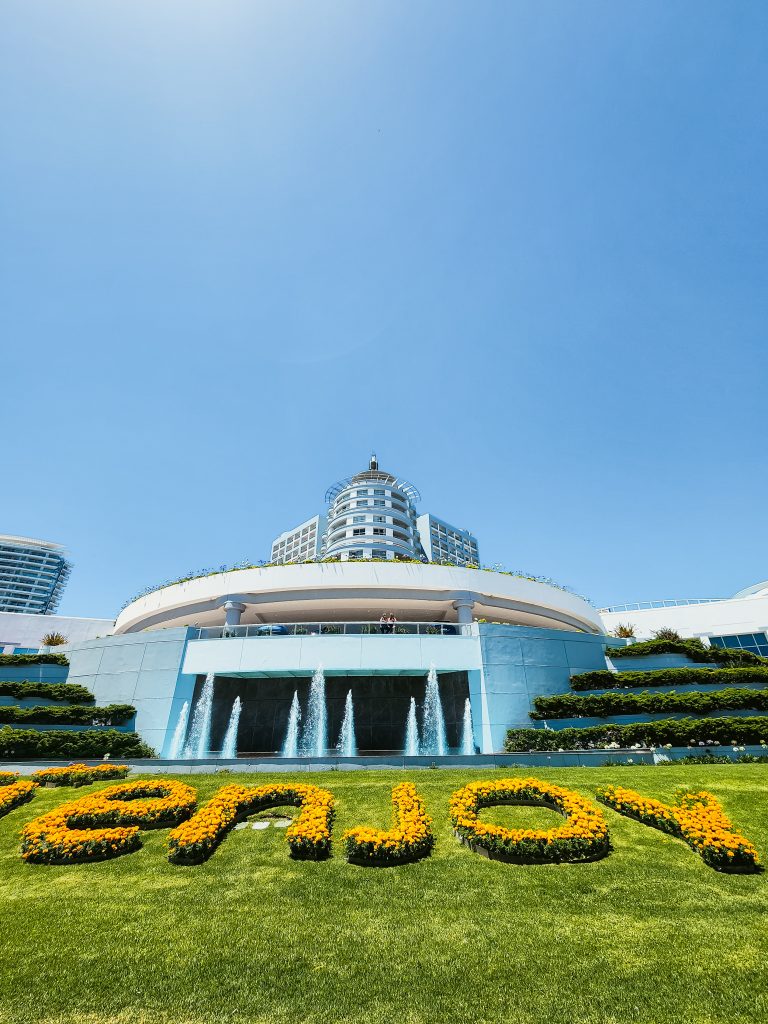
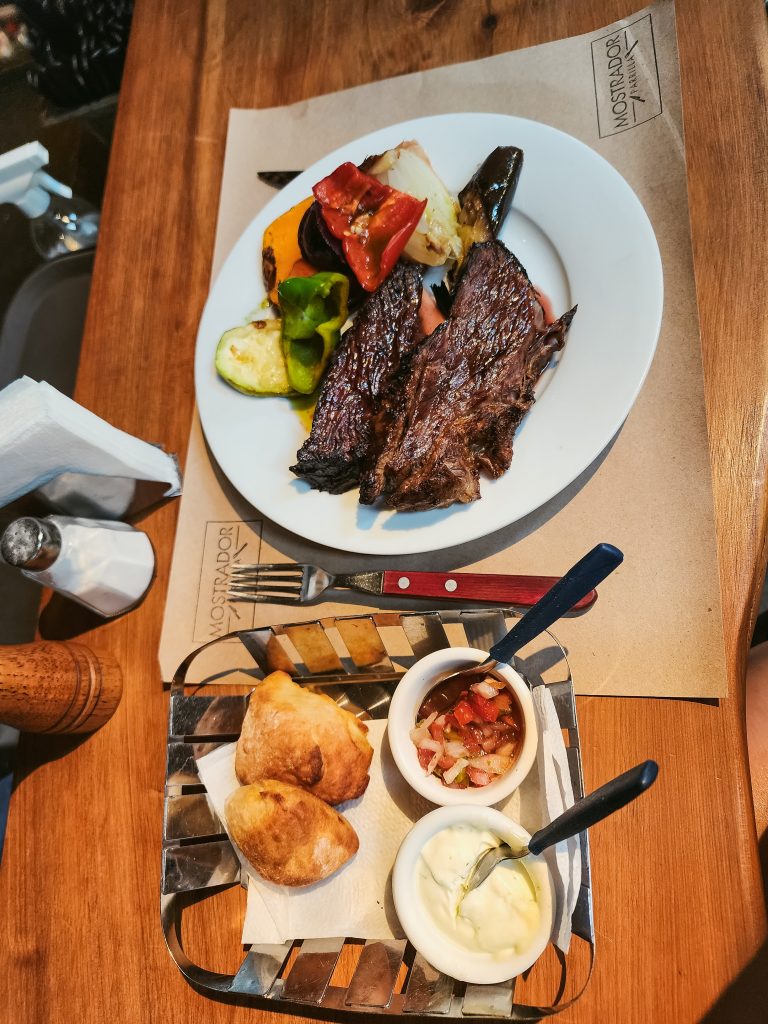
In Uruguay, there are several traditional dishes and foods that you must try. Some of them that I recommend are
- Asado: Uruguayans take their grilling seriously, and asado is a must-try. It’s a traditional barbecue featuring various cuts of meat, including beef ribs, chorizo sausages, and morcilla (blood sausage).
- Chivito: This is a hearty sandwich made with thinly sliced steak, ham, cheese, lettuce, tomato, and mayonnaise, often served with a side of fries.
- Empanadas: These savory pastries are filled with a variety of ingredients such as beef, chicken, or cheese, and are perfect for a quick and tasty snack.
- Milanesa: Similar to a breaded cutlet, milanesa is usually made with beef or chicken and is often served with mashed potatoes or a salad.
Must try drinks in Uruguay:
In Uruguay, you can find a variety of traditional and popular drinks to try. Such as:
- Mate: This is a traditional South American drink made from dried yerba mate leaves. It’s typically served hot in a hollowed-out gourd (also called a mate) and sipped through a metal straw (bombilla).
- Tannat Wine: Uruguay is known for its production of Tannat wine, a bold and robust red wine. It pairs well with the country’s grilled meats and hearty dishes.
- Pisco: This is a type of brandy made from distilled grapes. It’s commonly used in cocktails or enjoyed on its own.
- Grappamiel: A traditional Uruguayan liqueur made from grappa (a grape-based pomace brandy) and honey. It’s often served as a digestif.
- Clara: A popular beer cocktail made with beer and lemon soda. It’s a refreshing drink, especially during the hot summer months.
Local Currency in Uruguay
The local currency in Uruguay is the Uruguayan peso, denoted by the symbol “$” or “UYU” to differentiate it from other pesos. The peso is further subdivided into 100 centésimos, although centésimos are no longer in circulation due to their minimal value.
Banknotes come in denominations of 20, 50, 100, 200, 500, 1000, and 2000 pesos, while coins are available in denominations of 1, 2, 5, 10, and 50 pesos. It’s advisable to have a mix of cash and credit/debit cards when traveling in Uruguay, as not all places accept cards, especially in smaller towns or rural areas.
Is it safe for solo female travelers in Uruguay?
Out of all the countries I solo traveled to in Latin America, Uruguay is probably one of the safest countries I visited. It has a relatively low crime rate compared to other Latin American countries, and violent crime against tourists is rare. However, as with any destination, it’s important to take common-sense precautions to ensure your safety:
- Stay in well-lit and populated areas: Avoid walking alone in poorly lit or deserted areas, especially at night.
- Use reputable transportation: Use registered taxis or rideshare services rather than accepting rides from strangers.
- Be aware of your surroundings: Keep an eye on your belongings and be cautious of your surroundings, especially in crowded or touristy areas where pickpocketing can occur.
- Respect local customs: Dress modestly and respectfully, especially when visiting religious sites or rural areas.
- Stay connected: Keep a charged phone with you and stay in touch with friends or family members, especially if you’re exploring off the beaten path.
Let me know in the comments:
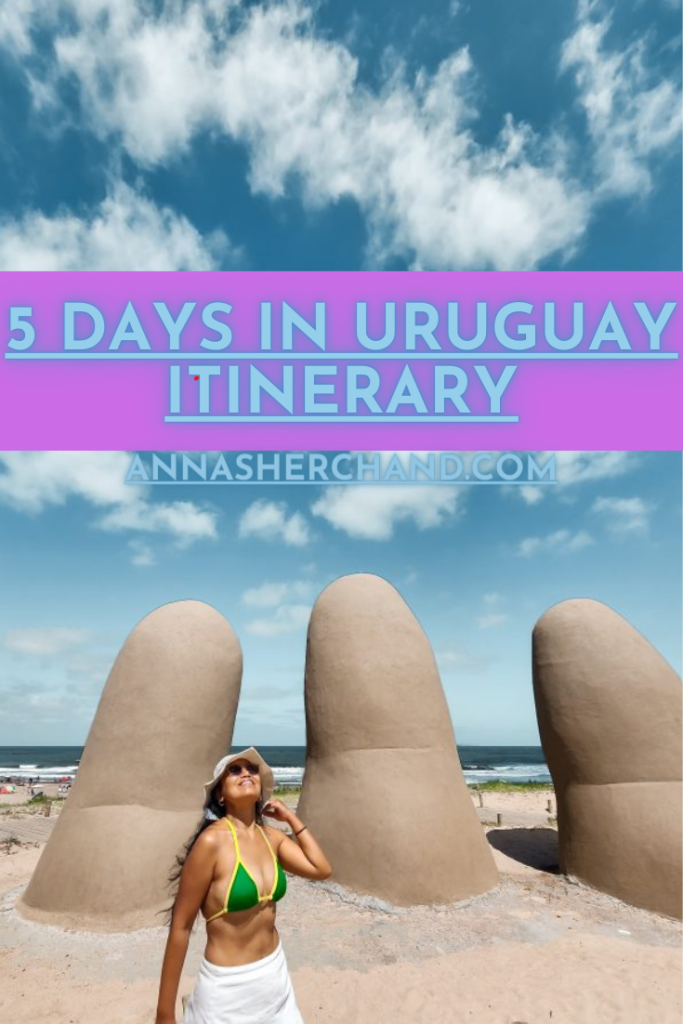
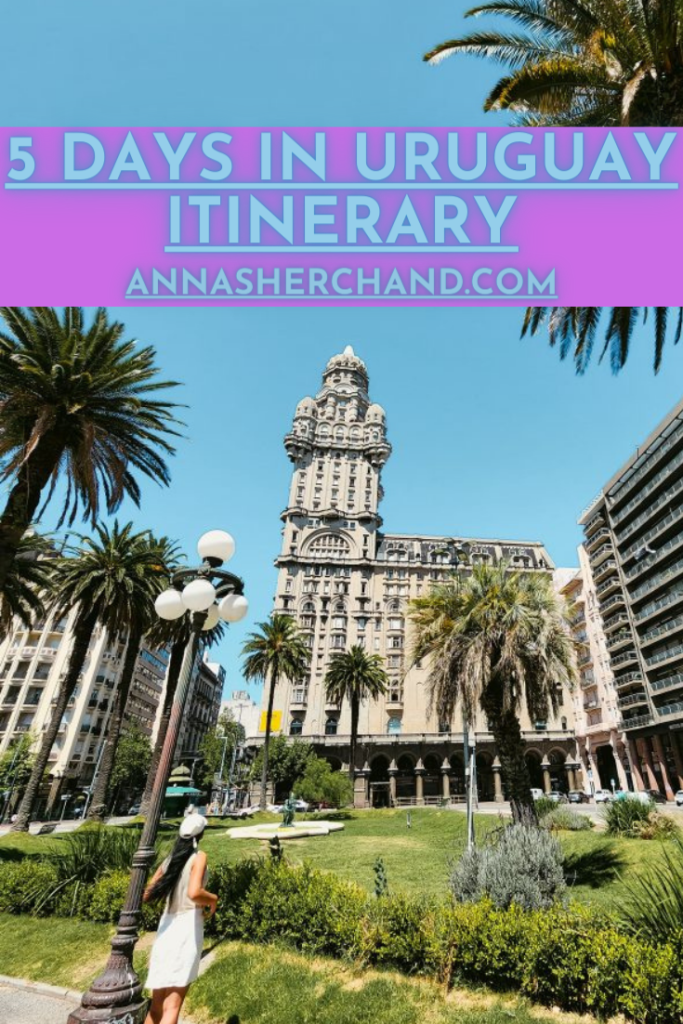
If you have any questions about these 5 days in Uruguay itinerary
Solo female travel to Georgetown Guyana
Backpacking one month in Central America itinerary
Solo trip to Peru One month itinerary
Solo female travel Colombia
7 days backpacking in Ecuador itinerary
5 days in Oaxaca itinerary
2 days in Mexico City itinerary
7 Days Itinerary in Georgia
4 Days in Azerbaijan Itinerary
Best places to visit from Split
2 days in Split, Croatia
Solo traveling to Mostar
Solo female travel to Kotor
Solo female travel to Budva
Solo female travel Albania
Warsaw by Train covers warsaw travel tips
Check out One day in Luxembourg, western Europe
Day trip from Zurich to Liechtenstein
Travel tips to South America
Fiji solo travel guide
Australia east coast must-see
Backpacking in Melbourne, Australia
Digital nomad guide to Melbourne
14 best area to stay in Melbourne CBD
Master Sydney travel guide
Solo travel guide to Brisbane
Exploring Adelaide the best way is a must-read
Important travel tips for Uluru trip
Melbourne day trips in winter
Day Hikes in Melbourne
Weekend getaway? Check out things to do in Ballarat
Perth solo itinerary
Top 5 must do in Darwin, Australia
How to go from Dublin to Howth
Solo female travel Romania
Read a recent day trip to Zaanse Schans from Amsterdam
How about a solo itinerary to Canberra– Australia’s capital city?
Solo trip to Peru, travel tips to South America
Check out the 7 days Hanoi travel guide.
Book accommodation through trusted Booking.com
I have detailed travel resources right here. Save money, learn what and how.
If you like this article, follow my adventures on Instagram, Facebook, YouTube, Twitter, and Pinterest, or read about me travel blogger from Australia but most importantly sign up to my e-mail list to keep up with updates and travel posts!
